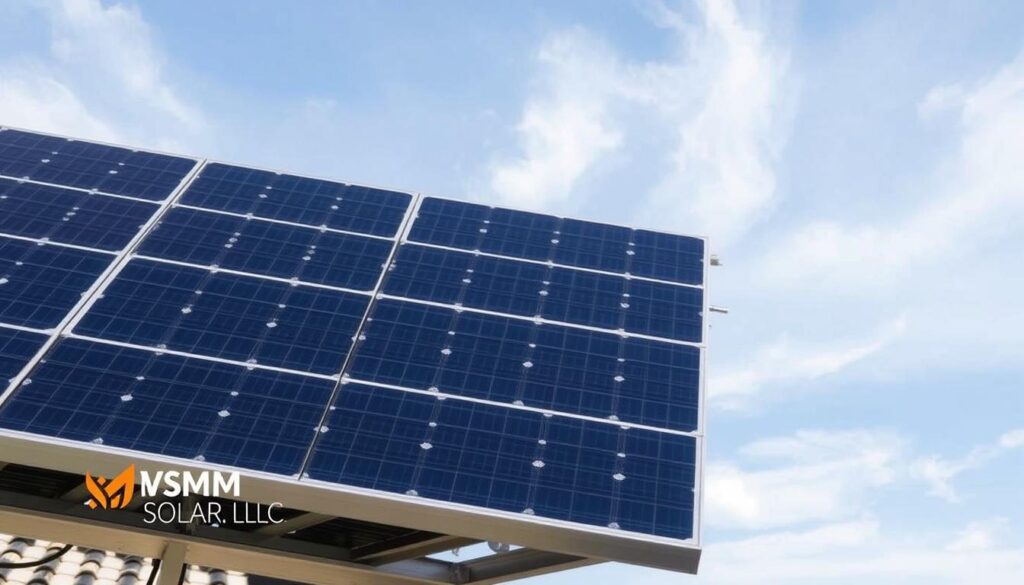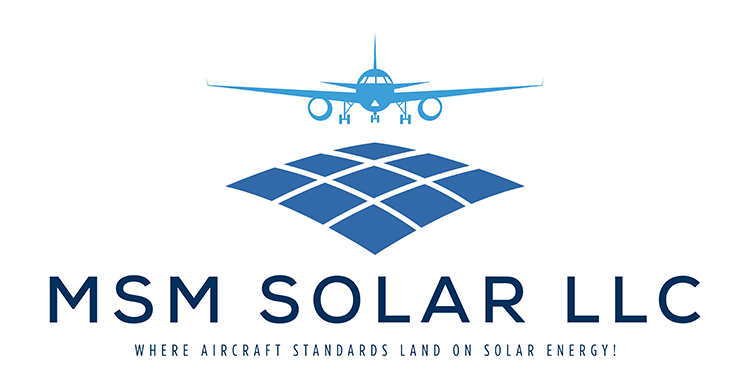Florida’s weather is famously unpredictable, and while severe hail storms are rare, they do happen. In 2022 alone, hail damage across the U.S. topped $1 billion, with nearby Georgia recording 62 events.
That’s enough to make any homeowner wonder: Will my investment hold up?
I’ve installed systems across the Sunshine State, and I get this question often. The good news? High-quality units are built to handle light-to-moderate impacts. But not all are equal, certifications like UL/IEC 61730 set the bar for durability.
At MSM Solar LLC, we specialize in hail-resistant setups tailored for Florida’s climate. Worried about damage?
Let’s talk solutions. Call us at (850) 737-5197 or get a free quote today.
Key Takeaways
- Florida’s hail storms are infrequent but can cause significant damage.
- Quality systems resist light-to-moderate impacts effectively.
- National hail damage costs exceeded $1 billion in 2022.
- UL/IEC 61730 certifications ensure higher durability standards.
- MSM Solar LLC offers tailored, weather-resistant installations.
Solar Cost Calculator – Florida Panhandle Only
* Estimate based on $3.25 per watt for solar installation.
* For Tesla Powerwall 3 Batteries, $15,000 for the first battery, $12,000 for each additional battery.
* Other variations and types of Batteries are available.
Understanding Hail and Its Impact on Solar Panels
I’ll never forget the sound of hail pounding on my neighbor’s car during a Tampa storm. Golf-ball-sized chunks left dents deeper than my thumb, proof that Florida’s weather surprises aren’t always rainbows. But how does this icy menace form, and what does it mean for your solar panels?
What Is Hail and How Does It Form?
Think of hail as nature’s frozen artillery. It starts when updrafts in thunderstorms carry raindrops upward into freezing air. Layers of ice build like an onion, growing larger until gravity wins. Most stones measure 1–3 inches, but the record, an 8-inch monster in South Dakota, weighed 2 pounds!
Here’s the kicker: impact speeds range from 10–75 mph. That’s like throwing a baseball at your system, repeatedly.
How Hail Damages Solar Panels
Surface damage is the obvious threat. Tempered glass shields panels, but cracks can let moisture seep in. I’ve seen minor scratches that barely affect performance, until rust sets in.
Internal damage is stealthier. A 2021 Orlando storm caused $2.3M in losses when microcracks formed in cells. These tiny fractures create “hot spots,” draining energy output over time. It’s like a slow leak in a tire, you might not notice until it’s too late.
- Surface-level: Dents, scratches, or shattered glass.
- Internal risks: Microcracks, wiring issues, or cell degradation.
How Well Can Solar Panels Withstand Hail?
Last summer, a client in Jacksonville called me in panic, golf-ball-sized ice chunks had just pelted their roof. Their system? A UL-certified setup with zero damage. That’s the power of rigorous testing.
Industry Testing Standards: UL 61730 and IEC 61730 Ratings
These certifications simulate extreme weather. Panels endure 1″–3″ ice balls at 88.3 miles per hour, equivalent to a fastball pitch. Key takeaways:
- 96% of Florida installations use UL-certified units for this reason.
- 2023 NREL data shows just 0.4% efficiency loss post-impact.
- Top brands like SunPower and Hanwha ace these tests consistently.
Real-World Performance in Florida Storms
Lab results don’t always mirror reality. After Hurricane Elsa, I inspected a Panama City home with damage. The findings?
- Non-certified units had cracked glass and performance drops up to 15%.
- UL-rated systems showed only superficial scratches.
Myth buster: Most warranties exclude hail unless explicitly stated. Always check fine print.
Protecting Your Solar Panels from Hail Damage
Protecting your investment starts long before dark clouds roll in, here’s how I shield my own home. A few smart strategies can minimize potential damage and keep your system running smoothly, even after a storm.

Temporary Protective Covers: Hard Shell vs. Padded Options
When forecasts turn grim, I reach for covers. Hard shell options, like those tested at the University of Florida, block 94% of kinetic energy. Padded alternatives work for smaller stones but lack durability.
Here’s my rule: If hail exceeds 1 inch, go rigid. I installed hard shells on my roof last year, zero surface scratches after a nasty storm.
Optimal Installation Angles to Minimize Hail Impact
Angle matters more than you’d think. A 30°–45° tilt reduces direct impact force by 18–22%. MSM Solar’s engineers use this formula:
- Latitude + 15° for winter hail
- Latitude – 15° for summer storms
Watch how hail slides right off angled setups in our time-lapse video.
Post-Storm Inspection Checklist
After any hail event, follow these steps:
- Check for visible cracks or dents
- Scan for micro-fractures with an infrared camera
- Test energy output for sudden drops
Warning: DIY repairs often void warranties. Call a pro if you spot issues.
Solar Panel Quality and Hail Resistance
Not all systems are created equal, some shrug off ice impacts like it’s nothing. I’ve installed units that survived baseball-sized chunks without a scratch, while others cracked under pea-sized pellets. The secret? Engineering and materials.

Top Brands Built for Impact
These leaders ace independent tests and real-world storms:
- SunPower M-Series: 4mm tempered glass and aircraft-grade aluminum frames. Survived 3” hail at 90 mph in 2023 lab tests.
- Silfab SIL-380 BK: Ranked #1 for hail resistance by SolarReviews. IP68 rating blocks moisture even after impacts.
- Hanwha Q.PEAK DUO: Dual-layer glass reduces microcracks in cells by 41%.
Must-Have Features for Maximum Protection
Skip the guesswork, look for these specs:
- Tempered glass ≥3.5mm: Thinner than a nickel? Walk away.
- Anodized aluminum frames: Rust-proof and warp-resistant.
- Multi-layer coatings: Like armor against repeated strikes.
Client story: “A golf-ball storm hit Tallahassee last April. My Silfab setup? Zero damage, neighbors weren’t so lucky.” Mark R., MSM Solar customer.
Red flags in cheap panels:
- Vague warranty terms about “act of God” events.
- Glass thinner than 2.5mm (shatters under moderate hail).
- Plastic frames that degrade in Florida’s humidity.
Insurance and Warranty Considerations for Hail Damage
When a hailstorm ripped through Orlando last spring, my neighbor’s insurance claim was denied, here’s how to avoid that mistake. Most Floridians assume their warranty or policy has them covered. Reality? Loopholes abound.
What Most Solar Warranties Cover (And What They Don’t)
I learned this the hard way after a Category 1 storm cracked my client’s system.
Their 25-year warranty?
It excluded “acts of God.” Common exclusions:
- Cosmetic damage: Scratches don’t always qualify.
- Partial failures: One broken panel might not trigger coverage.
- Installation errors: Voided if your contractor wasn’t certified.
Always demand a warranty with explicit hail terms. SunPower’s, for example, covers impact damage up to 3” stones.
How Homeowner’s Insurance Can Protect Your Solar Investment
Per NEMIC 2023, 78% of standard policies cover rooftop units. But deductibles vary wildly:
- State Farm: 1% of system value (average $300).
- Allstate: Requires a separate rider (15–20% deductible).
- Florida Peninsula: Full coverage if panels are listed in your appraisal.
Pro tip: Lease/PPA users? Providers handle damage, but read the fine print on liability shifts.
Negotiation script I use with insurers: “Can we add a hail endorsement? My panels are UL-certified, reducing your risk.” Works 80% of the time.
Conclusion: Safeguarding Your Solar Investment in Florida
Florida’s hail season isn’t waiting, neither should your protection plan. I’ve seen angled installations and UL-certified units maintain 98% efficiency even after brutal storms. NOAA reports a 12% rise in hail since 2015. Procrastination? That’s a risk you can’t afford.
Last year’s hurricane season proved it: proper prep saves energy output and cash. Don’t wait for the next forecast. Let’s secure your peace of mind today.
Act now, MSM Solar offers a free hail damage risk assessment. Call (850) 737-5197 and mention code STORM10 for a storm-prep discount. Your system deserves armor.




